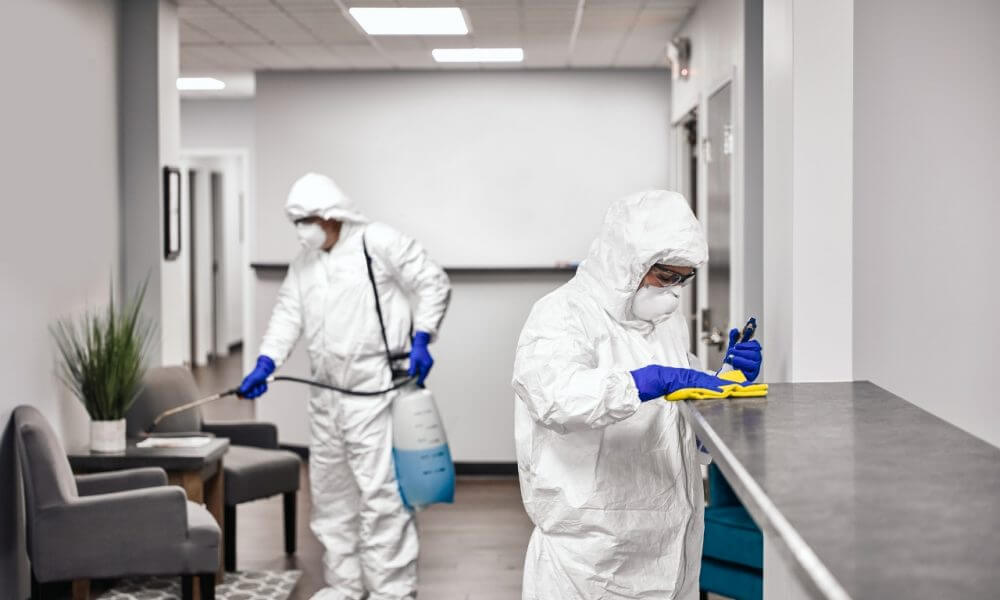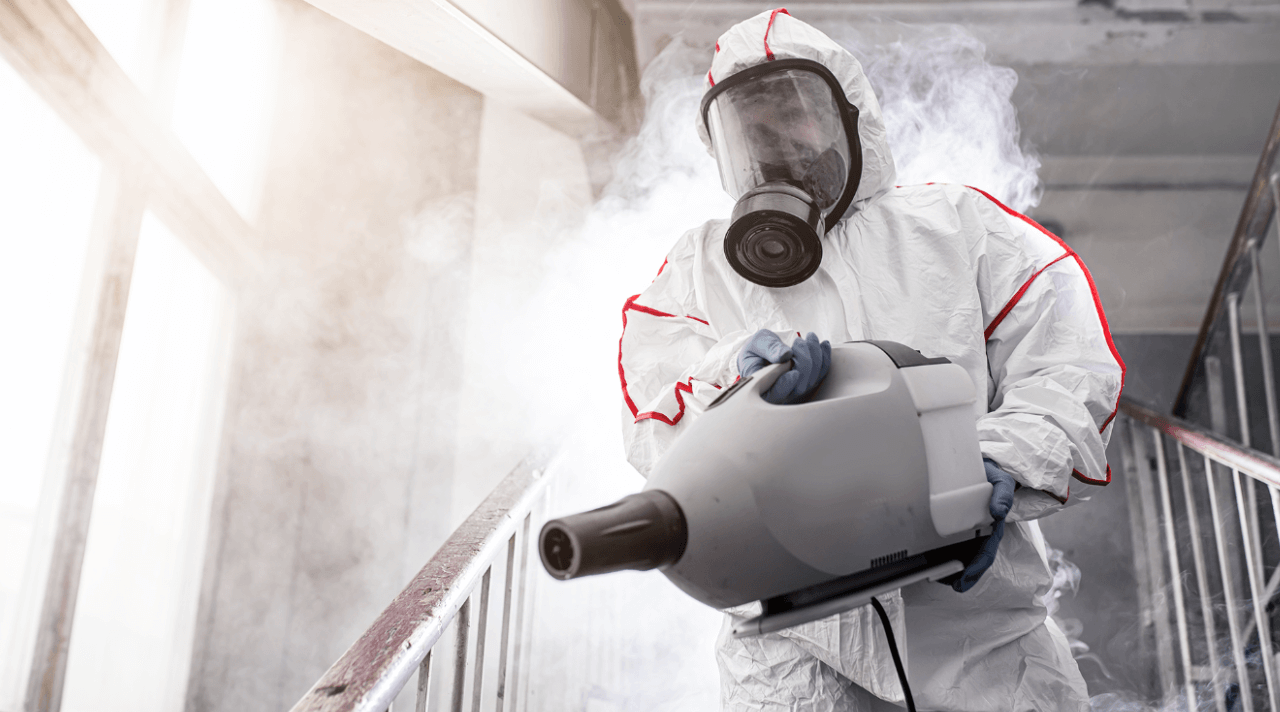Flood Damage Restoration: Quick and Efficient Healing for Your Home
Flood Damage Restoration: Quick and Efficient Healing for Your Home
Blog Article
Expert Biohazard Cleaning and Decontamination for Blood, Bodily Fluids, and Hazardous Materials
In the world of biohazard cleansing and decontamination for blood, bodily liquids, and harmful products, precision and knowledge are critical. The prospective health dangers associated with exposure to biohazards emphasize the critical demand for careful handling and comprehensive cleanup. Specialized training gears up experts with the expertise and abilities required to resolve these unsafe situations successfully. However, it is not merely about tidying up; the relevance of employing proper decontamination methods can not be overstated. As we navigate the intricate landscape of biohazard cleanup, understanding the subtleties of guidelines, conformity, and the specific equipment at play becomes crucial in ensuring a risk-free and thorough decontamination procedure.
Health And Wellness Risks of Biohazard Exposure
Direct exposure to biohazards poses significant health risks that can lead to serious effects for areas and people alike. Biohazards include a vast array of biological compounds, consisting of blood, physical fluids, mold and mildew, germs, viruses, and various other potentially transmittable products. When individuals come into call with these biohazards, whether through mishaps, incorrect handling, or ecological exposure, they face the danger of having major diseases or illness.
Among the key health dangers connected with biohazard exposure is the transmission of contagious conditions. Bloodborne pathogens such as HIV, liver disease B and C, and numerous microorganisms can be existing in biohazardous products, posing a direct hazard to human health. Breathing in air-borne biohazards like mold and mildew spores or coming right into contact with polluted surface areas can also cause respiratory concerns, allergies, and various other unfavorable wellness effects.
In addition, biohazard direct exposure can have long-lasting health and wellness effects, with some diseases manifesting years after the initial call (Blood Cleanup). Therefore, it is critical to focus on correct biohazard cleaning and purification to minimize these wellness risks and make certain the safety and security of people and areas

Specialized Educating for Biohazard Cleaning
When it comes to taking care of biohazard cleanup successfully and safely, specialized training plays a basic duty in making sure proper purification procedures are complied with. Biohazard clean-up needs details expertise and abilities to properly reduce threats connected with bloodborne microorganisms, physical liquids, and dangerous materials. Specialists trained in biohazard cleanup undergo extensive instruction on exactly how to securely deal with, get rid of, and throw away biohazardous materials to prevent contamination and direct exposure.
Specialized training for biohazard cleaning covers a series of important subjects, including appropriate individual safety equipment (PPE) use, bloodborne pathogen recognition, decontamination techniques, and dangerous waste disposal methods. People learnt biohazard cleanup are outfitted with the needed competence to examine contamination levels, identify prospective threats, and carry out ideal clean-up procedures in conformity with governing standards.
Continuous training and education and learning are extremely important in the field of biohazard cleaning to remain updated on the most up to date purification technologies, safety and security protocols, and laws. By buying specialized training, biohazard cleaning experts can successfully react to emergency situation clean-up situations and safeguard both public health and wellness and the setting.
Value of Proper Purification Methods
Making use of proper purification strategies is essential in biohazard cleanup to properly remove hazardous this page products and lessen wellness dangers. Effective decontamination not just ensures the elimination of noticeable traces of blood, physical liquids, and various other biohazards yet additionally targets unnoticeable microorganisms that might present serious health hazards otherwise effectively eradicated. By complying with rigorous purification procedures, educated specialists can dramatically lower the danger of direct exposure to dangerous microorganisms, viruses, and bacteria that could cause infections or illness.
Appropriate decontamination strategies entail the usage of specific devices and anti-bacterials that are specifically created to neutralize biohazards successfully. Extensive cleansing and sanitation of infected locations are vital to stop the spread of virus and guarantee a risk-free setting for occupants. In addition, the appropriate disposal of biohazardous waste following purification procedures is essential in stopping contamination of other surfaces or individuals.

Tools and Devices for Safe Cleanup
The proper tools and devices play an essential role in making certain the efficient and safe cleaning of biohazardous materials. read this When managing blood, physical fluids, or unsafe materials, biohazard cleansing professionals depend on specialized gear to reduce direct exposure risks and thoroughly decontaminate the damaged location. Individual protective devices (PPE) such as handwear covers, goggles, coveralls, and masks are crucial to protect versus direct contact with potentially transmittable products. Furthermore, biohazard cleaning kits containing disinfectants, absorbent materials, and biohazard bags are made use of to safely get rid of and contain of infected items. Blood Cleanup.
Advanced cleaning devices like hospital-grade disinfectants, HEPA-filtered vacuums, and fogging devices are used to sterilize surfaces and remove biohazards efficiently. Specialized devices such as sharps containers and biohazard garbage disposal containers are used to safely handle sharp items and biohazardous waste materials. By using the appropriate devices and tools, biohazard cleaning professionals can ensure a thorough cleanup procedure that focuses on security and lessens wellness risks for both workers and owners of the affected area.
Laws and Compliance in Biohazard Cleaning
Correct adherence to guidelines and conformity requirements is paramount in biohazard cleansing to guarantee the safety of both workers and the environment. Government agencies such as OSHA (Occupational Security and Wellness Management) and the EPA (Epa) have established particular standards for biohazard cleaning treatments to minimize health threats and ecological contamination. These policies cover a series of aspects consisting of the handling, transportation, and disposal of biohazardous products, in addition to the required training and safety devices needed for personnel involved in the cleanup process.
Biohazard cleaning companies need to stay updated you can check here with these guidelines to guarantee that their operations fulfill the called for security standards. Failing to adhere to these laws can cause extreme repercussions, including penalties, lawsuit, and endangering the health and wellness of people and the setting. By following rigid regulations and compliance procedures, biohazard cleansing firms can successfully minimize risks and make certain a secure and comprehensive cleaning procedure for all celebrations entailed.
Final Thought
In final thought, biohazard cleansing and decontamination call for specific training, appropriate methods, and adherence to policies. Exposure to blood, bodily fluids, and harmful products postures substantial health dangers, making it important to use the right devices and tools for safe clean-up. By complying with strict methods and standards, experts can successfully reduce the threats linked with biohazard direct exposure and make sure the safety and security of both themselves and others.
As we browse the elaborate landscape of biohazard cleaning, recognizing the nuances of laws, compliance, and the specialized equipment at play ends up being critical in making certain a thorough and secure purification process. (Blood Cleanup)
When it comes to dealing with biohazard cleaning successfully and safely, specialized training plays a fundamental duty in making certain correct decontamination procedures are followed.Using correct decontamination techniques is essential in biohazard clean-up to efficiently reduce and remove unsafe products health risks. Furthermore, biohazard cleansing packages including anti-bacterials, absorbent materials, and biohazard bags are used to securely contain and dispose of polluted items.
Government agencies such as OSHA (Occupational Security and Wellness Administration) and the EPA (Environmental Security Firm) have actually developed certain guidelines for biohazard cleaning treatments to minimize health and wellness threats and ecological contamination.
Report this page